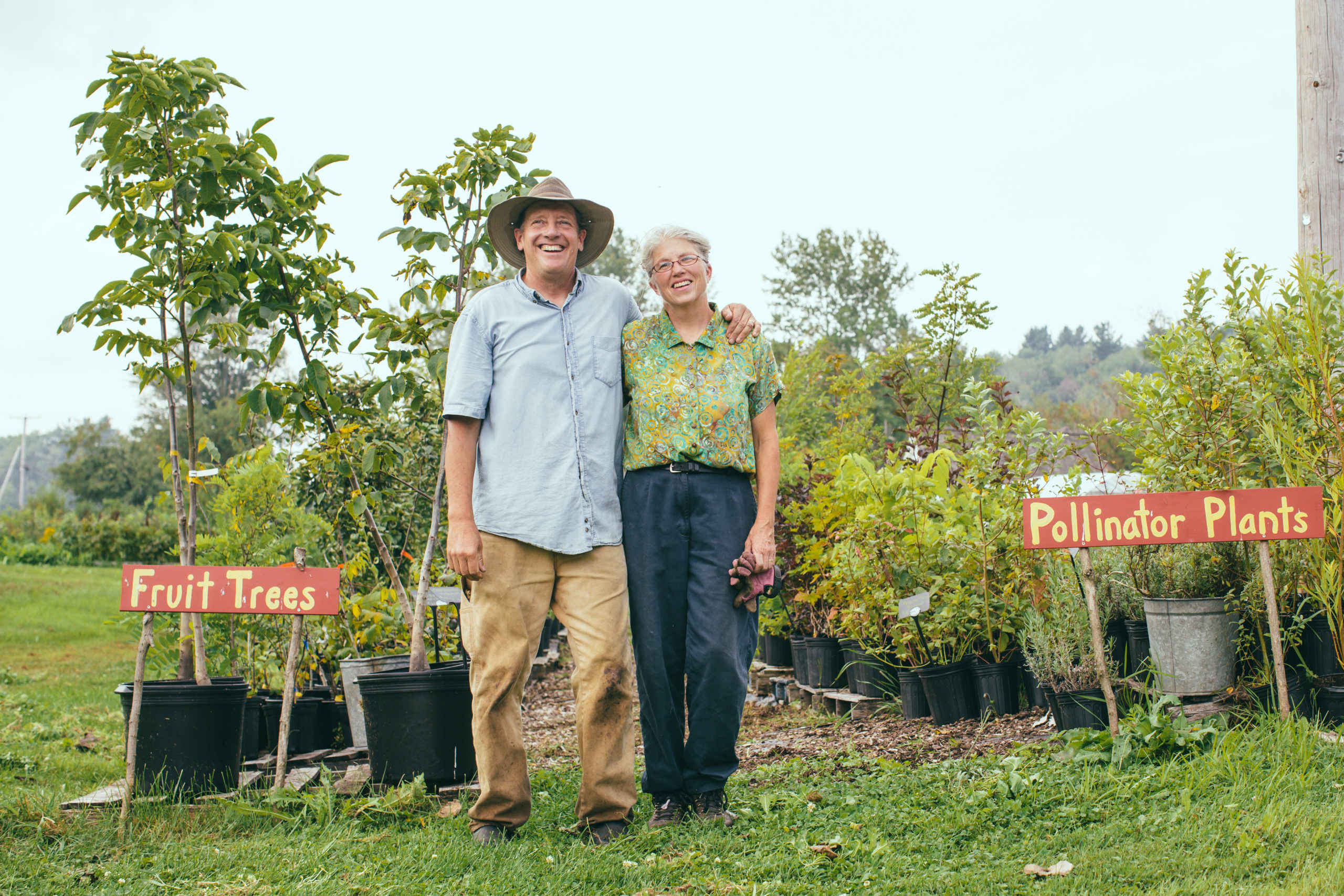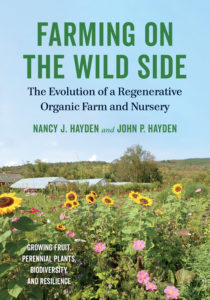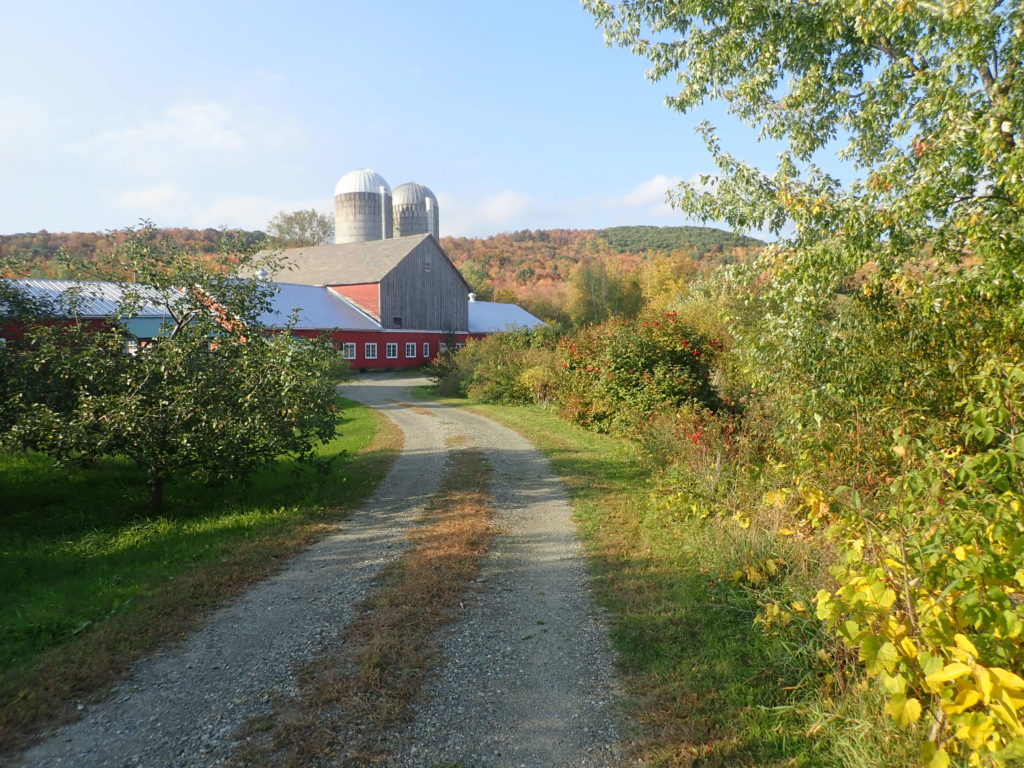
Apr 3, 2020
Grower Column: Farming on the Wild Side
We’ve been organic farmers since we started farming back in the early 1990s.
We bought an old dairy farm in northern Vermont that had gone out of business in the 1980s. Soil fertility around the farm was low, and biodiversity was even lower. From the start, we wanted to create a farming system that worked with nature, regenerated the land, and provided wholesome pesticide-free food for our young family.
We started with management intensive grazing of organic livestock to help increase soil fertility and added organic vegetables in the early years. More recently we have phased in organic fruits and phased out livestock and annual vegetables. For the past eight years, we have been an organic perennial-fruit farm with an organic fruit nursery. This has proven to be a good economic and ecological progression for us.
 We’ve chronicled our philosophy and our “how-to” approach in our recent book, “Farming on the Wild Side: The Evolution of a Regenerative Organic Farm and Nursery,” published through Chelsea Green Publishing.
We’ve chronicled our philosophy and our “how-to” approach in our recent book, “Farming on the Wild Side: The Evolution of a Regenerative Organic Farm and Nursery,” published through Chelsea Green Publishing.
Farming on the wild side is the phrase we use for our philosophy and practices for regenerative organic farming. It’s about taking an ecosystems approach and working with nature as we grow perennial fruit and create a biodiverse and ecologically beneficial farm. The practices stem from the understanding that everything is connected, that we and our farm are connected to the surrounding ecosystem and community and those, in turn, are connected to the rest of the world.
We know that a robust and resilient ecosystem consists of high biodiversity and a complex food web, so to mimic that, we’re growing about thirty different kinds of perennial fruit and nuts. We have also planted hundreds of native trees, shrubs, and perennial plants on the farm that support our fruit crops, and we have encouraged wild places to come back to the farmscape. The plantings and wild places sustain beneficial insects, birds and other wildlife while providing a source of balance and equilibrium for our crops.
We don’t use any pesticides on our farm, not even organically approved ones, because all pesticides are biologically active compounds that we believe are equivalent to an ecological sledgehammer for what should be a minor problem. With their ripple effect, not only do pesticides target pests, they can also negatively impact other organisms including soil microbes and predators and parasites of the pests. They affect bird and pollinator populations and the web of life on the farm.

berry bushes on the left and a variety of native plants protecting our seasonal stream on
the right. Biodiversity is multi-functional beauty. Photo: The Haydens
Pesticide use also sets up a rollercoaster cycle of pest outbreaks requiring more pesticides. We wanted no part of that. Instead, we take advantage of a diversity of insects and wildlife, including birds, to help with pest management. Our biodiverse farm ecosystem, disease-resistant varieties, regular pruning, and healthy soils are also part of our disease and pest management strategy. We accept a low and steady pest population as part of a healthy ecosystem. Any small losses are offset by the profitability of low inputs and low labor.
We moved into fruit production for resiliency, ecological and economic reasons. After experiencing two 500-year floods on the farm in one year that flooded our vegetable fields and eroded soil, we decided perennial fruit plantings such as elderberry and aronia, both native and flood-tolerant species that produce nutritional and medicinal berries, would be a much better choice for those fields.
Perennial fruits and nuts don’t require tillage. No-till cultivation encourages fungal-based soil ecosystems which create healthy biodiverse soils that also sequester carbon. This is important in mitigating the climate crisis. Selling high-value organic fruit and fruit products, like syrups and fruit ciders, also made economic sense for our small farm operation. Besides direct sales, we have also found good wholesale markets with the expanding beverage industry in Vermont, including many new breweries, cideries, wineries and soda makers.
By propagating many of our own bushes and trees, we were able to keep costs down during the years of planting perennials. This also prompted us to start an on-farm fruit nursery which includes fruit trees, berry bushes and native conservation plants. At this point in our nursery operation, we buy in most of our trees in order to provide the quantity and diversity of fruit trees for our customers, but we still propagate and grow out most of the berry bushes and conservation plants.
We really want to encourage others to grow their own fruit and create biodiverse and ecologically resilient backyards and farms. That was also the main reason for writing the book, to get the word out and inspire others to farm and garden “on the wild side.”






